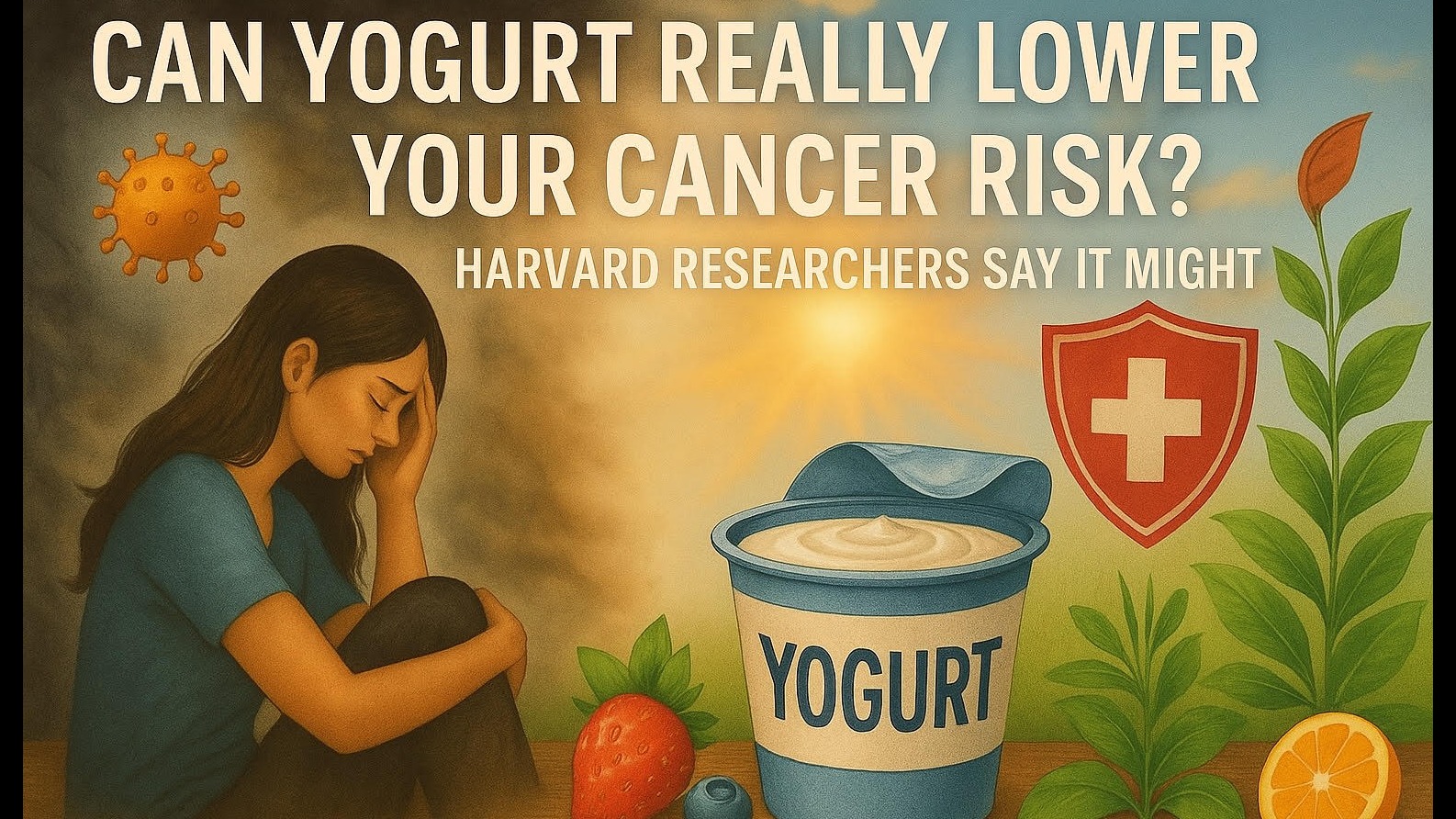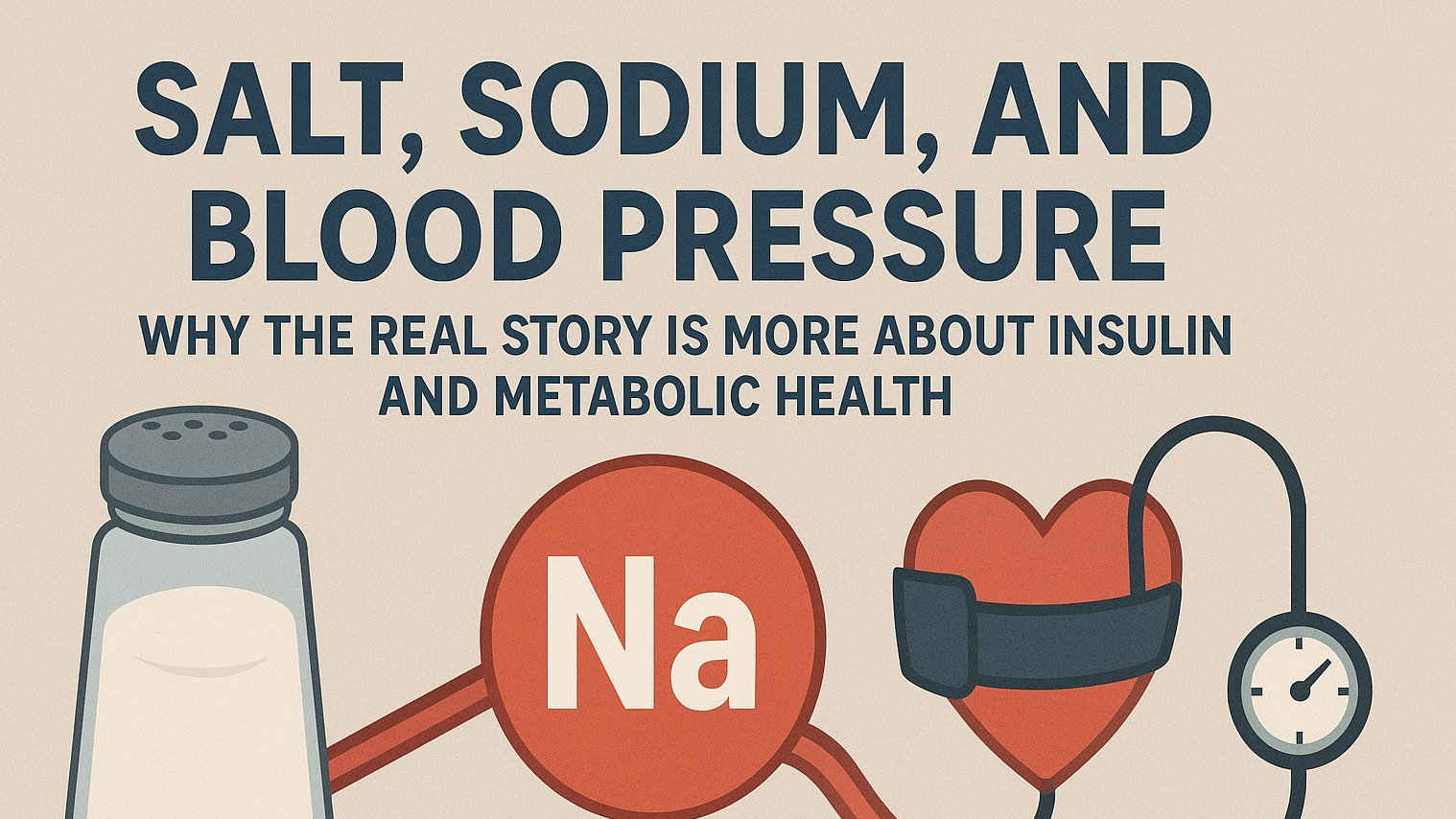
In the world of functional medicine, we often say that healing starts in the gut. But what if something as simple as a weekly cup of yogurt could significantly lower your risk of cancer?
Groundbreaking research out of Harvard in 2024 is giving us one more reason to prioritize gut health—and this time, the focus is on yogurt and its powerful connection to colon cancer prevention.
🧪 What the Study Found
This large-scale prospective study, conducted by researchers at Harvard and published in early 2024, followed over 132,000 participants across several years, including both men and women from the Health Professionals Follow-Up Study and the Nurses’ Health Study.
The key finding?
Individuals who consumed two or more servings of yogurt per week had a 20% reduced risk of developing right-sided, Bifidobacterium-positive colorectal cancer.
Here’s why this matters:
This particular subtype of colorectal cancer is more aggressive, develops on the right side of the colon, and is often diagnosed at later stages.
It is increasingly common in adults under 50, contributing to the rising incidence of early-onset colorectal cancer, a growing public health concern.
These tumors are associated with the presence (or absence) of specific gut bacteria, including strains of Bifidobacterium, highlighting a possible microbiome-cancer axis.
In essence, yogurt consumption seemed to create an internal environment less favorable for tumor development, especially for subtypes linked to microbial imbalances.
🧬 What’s the Connection Between Yogurt and Colon Cancer?
The researchers propose several biological mechanisms that explain the protective association:
1. Yogurt Delivers Beneficial Probiotics
Yogurt contains live cultures, primarily Lactobacillus and Bifidobacterium, which are known to:
Reinforce the intestinal barrier (helping prevent leaky gut),
Reduce gut inflammation, and
Promote the production of short-chain fatty acids (SCFAs) like butyrate, which have anti-cancer properties.
2. It Balances the Microbial Ecosystem
People who ate more yogurt were less likely to harbor cancer-associated microbial patterns, particularly those linked to pro-inflammatory or DNA-damaging species such as Fusobacterium nucleatum. This bacterium has been increasingly implicated in colorectal tumorigenesis.
By increasing beneficial microbes, yogurt may help crowd out pathogenic bacteria and reduce cancer-promoting metabolites.
3. Modulation of Immune and Inflammatory Pathways
The gut microbiome plays a key role in educating the immune system. A healthier microbial environment, supported by regular yogurt intake, may help regulate immune surveillance, reduce chronic inflammation, and prevent unchecked cellular proliferation—a hallmark of cancer.
4. Yogurt’s Role in pH and Enzyme Regulation
Certain yogurt cultures produce lactic acid, which lowers colonic pH. A more acidic colon can:
Reduce the activity of carcinogenic enzymes,
Inhibit harmful bacterial overgrowth,
And support detoxification pathways that keep the colon healthy.
🧠 Why Functional Medicine Cares About This
In functional health, we view the gut as the central hub of health—impacting everything from immune regulation and hormone balance to brain function and cancer prevention.
This study is a perfect illustration of that philosophy in action:
It connects a simple dietary choice (yogurt) to a complex biological outcome (cancer risk).
It shows how the gut microbiome acts as a mediator between food and disease.
And it reminds us that prevention often begins with small, consistent habits.
🥣 How to Choose the Right Yogurt
Not all yogurt is created equal. To get the full benefits seen in the study, keep these tips in mind:
Look for “live and active cultures” on the label—these are the probiotics doing the heavy lifting.
Avoid added sugars, which can fuel harmful gut bacteria. Stick to Organic plain Greek, no flavors which often have bad sweeteners and chemicals.
Opt for organic, grass-fed yogurt when possible to minimize exposure to hormones and antibiotics. Aldi has an affordable non-GMO Organic Greek Yogurt, or try your local health food store. Walmart is also starting to carry more healthy options.
Dairy-sensitive? Coconut or almond milk yogurts with added live probiotics are great alternatives—but check that they’re not loaded with starches or gums that are unhealthy for your gut.
Simple Ways to Eat More Yogurt:
Add it to your morning chia bowl with berries and hemp seeds, see Chia Pudding for a healthy chia pudding recipe, and replace the plant based milk with Organic plain Greek yogurt.
Use it as a base for savory dips or dressings (try it with lemon, garlic, and dill).
Blend it into a gut-healing smoothie with spinach, collagen peptides, and green apple.
Stir in cinnamon or unsweetened organic cacao powder for a blood sugar-friendly dessert.
🧬 Final Thoughts
This study doesn't claim that yogurt is a cure or a guaranteed shield against cancer. You can’t avoid disease with an unhealthy diet. But it does add to the growing body of research suggesting that your microbiome matters, and that what you eat can shape it in powerful ways.
When you consistently feed your body foods that nourish your gut, like yogurt, you're not just managing digestion—you’re supporting your immune system, lowering inflammation, and possibly reducing your long-term cancer risk. If you want to learn more, email me at kimlarson@larsonhealthweightloss.com and I can share more insights to help you heal and nourish your body.
So next time you're in the dairy aisle, remember: That small cup of Organic plain full fat Greek yogurt may be doing more for you than you think.
Find Delicious Recipes, Insightful blogs about Health, workouts, and my podcast at LarsonHealthWeightLoss.com.
Organic Greek Yogurt Recipes
Savory
1. Savory Greek Yogurt & Avocado Gut-Healing Dressing
🥣Why It’s Gut-Healing:
Greek yogurt delivers Lactobacillus and Bifidobacterium.
Avocado provides anti-inflammatory monounsaturated fats.
Garlic and lemon support liver detox and antimicrobial action.
Ingredients:
1 cup plain organic full-fat Greek yogurt
1 ripe avocado
1 garlic clove, minced
2 tbsp fresh lemon juice
2 tbsp extra virgin olive oil
2 tbsp chopped fresh dill or parsley
1/4 tsp sea salt
Water to thin (as needed)
Directions:
Blend all ingredients in a high-speed blender until smooth.
Thin with water to desired consistency.
Use as a salad dressing, dip for veggies, or topping for grilled proteins.
🍧 2. Turmeric-Spiced Greek Yogurt Bowl (Anti-Inflammatory Snack)
Why It’s Gut-Healing:
Turmeric helps modulate inflammation via the NF-κB pathway.
Black pepper enhances curcumin absorption.
Yogurt offers live probiotics for microbial balance.
Ingredients:
3/4 cup plain organic Greek yogurt
1/4 tsp ground turmeric
Pinch of black pepper
1/4 tsp cumin
Pinch of sea salt
1 tsp extra virgin olive oil
Optional: chopped cucumber or shredded carrot
Directions:
Stir spices and olive oil into yogurt until fully combined.
Top with grated or chopped fresh veggies for crunch.
Enjoy as a side dish or light meal.
🍲 3. Healing Bone Broth & Yogurt Soup (Savoury Gut Reset)
Why It’s Gut-Healing:
Bone broth contains glutamine, glycine, and collagen to repair the gut lining.
Greek yogurt added after cooking boosts probiotic content.
Ginger and garlic reduce gut inflammation.
Ingredients:
2 cups organic bone broth (chicken or beef)
1/2 cup plain organic Greek yogurt (room temperature)
1 garlic clove, minced
1 tsp freshly grated ginger
1 tbsp lemon juice
1 tbsp extra virgin olive oil
1 tbsp chopped parsley or cilantro
Pinch of sea salt and cracked pepper
Directions:
In a small pot, heat bone broth with garlic and ginger until simmering (10 min).
Let it cool slightly, then stir in lemon juice and olive oil.
Add Greek yogurt off heat to preserve probiotics.
Sprinkle with herbs and serve warm.
🥒 4. Greek Yogurt Tzatziki (Microbiome-Boosting Dip)
Why It’s Gut-Healing:
Combines yogurt and prebiotic-rich cucumber and garlic.
Raw garlic acts as a natural antimicrobial and supports detox.
Ingredients:
1 cup organic Greek yogurt
1/2 cucumber, finely grated (squeeze excess water)
1 garlic clove, minced
1 tbsp extra virgin olive oil
1 tbsp lemon juice
1 tbsp fresh dill, mint, or parsley
Sea salt to taste
Directions:
Mix all ingredients in a bowl until well combined.
Chill for 30 minutes to meld flavors.
Serve with veggie sticks, seed crackers, or as a side with grilled wild salmon or lamb.
🌿 5. Yogurt-Marinated Wild Salmon (Omega-3 + Probiotic Power)
Why It’s Gut-Healing:
Yogurt helps tenderize protein and infuses it with probiotics.
Salmon offers powerful omega-3s to reduce inflammation.
Garlic and lemon support digestion.
Ingredients:
2 wild-caught salmon filets
1/2 cup organic Greek yogurt
2 tbsp lemon juice
1 garlic clove, minced
1 tbsp extra virgin olive oil
1/2 tsp smoked paprika
Sea salt and pepper to taste
Directions:
Mix marinade ingredients and coat salmon. Marinate for 1–2 hours in the fridge.
Bake at 375°F (190°C) for 12–15 minutes until salmon flakes easily.
Serve with roasted vegetables or a warm quinoa tabbouleh.
Treat
🥣1. Blueberry Chia & Greek Yogurt Parfait (Sweet + Prebiotic Fiber)
Why It’s Gut-Healing:
Blueberries support microbial diversity.
Chia seeds feed good gut bacteria and support healthy elimination.
Yogurt provides live probiotics and protein.
Ingredients:
3/4 cup plain organic Greek yogurt
1/2 cup fresh or frozen wild blueberries
1 tbsp chia seeds
1/2 tsp cinnamon
1 tsp raw honey or monk fruit (optional)
Optional toppings: shredded coconut, ground flax, or chopped walnuts
Directions:
In a jar or bowl, layer yogurt, chia seeds, and blueberries.
Sprinkle with cinnamon and sweeten if desired.
Let sit 10–15 minutes (or overnight) to allow chia to thicken.
Top with healthy fats or nuts for a more filling option.
🍧 2. Gut-Healing Greek Yogurt “Cheesecake” Bowl (Dessert Alternative)
Why It’s Gut-Healing:
Probiotic-rich yogurt replaces cream cheese.
Ground flax provides lignans and omega-3s.
Cinnamon helps regulate blood sugar and supports digestion.
Ingredients:
3/4 cup full-fat plain Greek yogurt
1 tbsp almond butter
1 tbsp ground flaxseed
1/2 tsp cinnamon
1/2 tsp vanilla extract
1 tbsp crushed walnuts or pecans
1 tbsp mashed raspberries or low-sugar berry jam
Directions:
Stir together yogurt, almond butter, flaxseed, cinnamon, and vanilla until smooth.
Top with walnuts and a spoonful of mashed berries or jam.
Enjoy chilled as a dessert, snack, or post-workout recovery bowl.
🍯 3. Lemon Ginger Honey Yogurt Elixir (Cold-Fighting Tonic)
Why It’s Gut-Healing:
Yogurt supports gut lining and immune defenses.
Ginger and lemon are antimicrobial and support detox.
Raw honey offers enzymes and prebiotic oligosaccharides.
Ingredients:
3/4 cup Greek yogurt
1 tsp fresh grated ginger
1 tbsp lemon juice
1 tsp raw manuka honey
Pinch of cinnamon or turmeric (optional)
Directions:
Mix ingredients until smooth.
Consume slowly, ideally in the morning or during immune stress.
Optional: thin with a bit of warm (not hot) herbal tea for a sippable tonic.
🥬 4. Cucumber-Dill Greek Yogurt Salad (Savory Probiotic Side)
Why It’s Gut-Healing:
Raw cucumber provides prebiotic fiber.
Yogurt and herbs reduce gut inflammation.
Dill and garlic support digestion and microbial balance.
Ingredients:
1 cup organic Greek yogurt
1 cup thinly sliced cucumber
1 garlic clove, minced
2 tbsp chopped fresh dill
1 tbsp lemon juice
1 tbsp olive oil
Sea salt and pepper to taste
Directions:
Combine all ingredients in a bowl.
Chill for 15 minutes to blend flavors.
Serve as a side to fish, chicken, or lentils.
🍨 5. Greek Yogurt Freezer Bites (Sweet & Cooling Snack)
Why It’s Gut-Healing:
Yogurt + berries = probiotic + antioxidant combo.
Coconut flakes and cacao nibs add prebiotic fiber and healthy fat.
Ingredients:
1 cup organic Greek yogurt
1/2 cup chopped berries (blueberries, raspberries, strawberries)
1 tbsp coconut flakes
1 tbsp cacao nibs
Optional: a touch of stevia or monk fruit
Directions:
Line a baking sheet with parchment paper.
Spoon dollops of yogurt onto the paper and top each with berries, coconut, and cacao.
Freeze until firm (about 1 hour).
Store in a sealed container in the freezer and enjoy as needed.
🧠 BONUS: Build-Your-Own Functional Yogurt Bowl Framework
Mix and match based on your health goals:
Gut-Healing:
Greek yogurt + kiwi + chia seeds + coconut flakes + ginger
Blood Sugar Balance:
Yogurt + cinnamon + almonds + berries + hemp seeds
Hormone-Supportive:
Yogurt + ground flax + pomegranate + Brazil nuts
Anti-Inflammatory:
Yogurt + turmeric + black pepper + olive oil drizzle + walnuts
 Add Row
Add Row  Add
Add 










Write A Comment